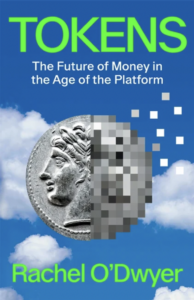
You Will Live on the Internet: The Grim Realities of the Metaverse
"The shit in the metaverse is spilling over into the shit in the real world."
Years ago I came across a children’s book called You Will Go to the Moon. It was first published in 1959 by Mae and Ira Freeman, ten years before the first moon landing. The book predicts a future where space travel is a leisure pursuit for a baby boomer and his parents. It shows the rocket they will use to get to the moon, the gated compounds they will live in, and the golf buggies they will use to get around. It wasn’t just telling a story. The Freemans were shilling a future. The grammar of Web3 is similar. You will live in the metaverse. Rather than putting a name on somewhere that is already there, supporters are working hard to bring it into being—not with a game engine, but through meme-hustling. These are new realities, hewn from words. “The advocates of Web3 are quite explicit about this,” Evgeny Morozov writes: “we’ve got this beautiful map on our hands—all that’s missing is the territory it is supposed to refer to. Perhaps, this is the right mindset for the age of the Metaverse: if there’s no reality, we’ll create one by talking it into existence.”
The term “metaverse,” like the term “blockchain,” is both vague and capacious, mashing together visions for the future of gaming and augmented reality with scenes from Ready Player One. For all its varied meanings, most agree it refers to one place, in the sense that the internet is one place with shared standards and multiple offerings. Each platform wants to be the monopoly—a hermetically sealed “magic circle” where, as Mitch Zamara, a metaverse game designer for the pay-to-earn game Million on Mars, puts it, “You are the central bank, you are the regulator, you are the Federal Reserve. You get to do everything.”
Platforms are competing to see who will build the world and develop the standards for how items are rendered, who will manage identity, and, perhaps most crucially, act as a payment rail for processing the purchase and transfer of digital items. To that end, many with a vested interest in crypto think that blockchain is a solution. As opposed to private rails, a blockchain might be used to create a payment rail that could work across many worlds. A blockchain might also be used to tokenize and maintain a degree of persistence for digital items, Matthew Ball suggests—a permanent registry where in-game items could be recorded and transferred, and where non-fungible tokens would allow for fungibility between worlds.
But, as things stand today, there are many islands and many tokens and many ways of rendering virtual things, all siloed, all competing to make the future. You cannot take your Tamagotchi to Animal Crossings, any more than you can wear your phygital Nikes to walk from Linden to Decentraland. That kind of interoperability is at least ten years away, says Luc Barthelet, the former CTO of EA Games, and vice president of Unity, a game engine provider that develops over 60 per cent of new game releases. It’s not just a question of developing agreements and accounting systems between different spaces. It’s also a question of the “rendering pipeline,” where a sword forged in Zelda might be coded differently to a sword in Fortnite. Both virtual worlds are faithfully rendered, but this doesn’t mean they are faithful to each other.
Barthelet, who has spent much of the past decade living on a boat with his wife and two children, has a theory that the metaverse might eventually be good for the real environment. “We are at a tipping point,” he says. “Somewhere around 2050, parts of the world will be deadly heat zones. We are looking at the mass migration of two billion people. Where will these people live in the future? It’s going to challenge the democratic system, any political system. It’s potentially the beginning of World War III.” It sounds like Fortnite, I think. It sounds like Battle Royale. (I wonder if this is why the Barthelets have taken to the high seas.) “And if we follow the rules and cut fossil fuels, we are destroying 30 per cent of the economy. We are facing a recession of sixty years, which by itself might bring World War III because no political system can handle such a thing. My hope,” Luc continues, “is we can shift from a real, material economy to virtual consumption. We are already seeing that younger generations are more and more satisfied by virtual goods.” Luc’s calculation assumes that virtual goods will replace physical consumption one day soon. You will own nothing and be happy—or else. Or maybe “assumes” is too strong a word. He hopes. The dream of the metaverse is that someday the rendered world, with its virtual things and virtual money, will feel more real than the world of things that can’t be called from the command line. But if Will is anything to go by, virtual stuff collects alongside the Lego and lightsabers littering his bedroom in the real world. And where will 2 billion migrants live in this future? Not in the metaverse.
Alan Butler is probably best known for Down and Out in Los Santos, a video work that uses the in-game camera to capture 3D-rendered homeless people and desolate landscapes in Grand Theft Auto. While the poor of Los Santos are loosely rendered, Butler argues that it is still possible to have “real emotional experiences” when interacting with them. “This might sound sad and geeky, but it’s true. The characters are aware of my presence as I photograph them: sometimes they ignore me, other times I’m attacked and have to defend myself. They chatter to each other, they share alcohol and cigarettes, they ask for money to buy drugs. Programmed to self-identify, they congregate with those in similar social situations to themselves.” Butler’s work takes place in game economies, but he is drawn to the stuff around the edges that the game classes as “worthless.”
The term “metaverse,” like the term “blockchain,” is both vague and capacious, mashing together visions for the future of gaming and augmented reality with scenes from Ready Player One.
Lately he has been looking at digital rubbish. Not the discarded phones and consoles currently crowding landfill sites in Ghana, but 3D renderings of litter in online games—though ultimately the two are intertwined. In Grand Theft Auto V, Butler says “Litter is there to create realism,” and “like its real world counterpart, we’re invited to think of it like shit and pretend it’s not there.” As Butler describes it, each solitary piece of rubbish is installed as a file in the game library, a database of every element reproduced in the game. Downloading the game moves this data through multiple servers. Playing the game sees the object loaded into RAM, and processed by the CPU and GPU. Finally, the computer outputs the image via an HDMI cable onto a monitor. If a player chooses to interact with the litter—shooting it with a gun so that it explodes to pieces—new smaller litter files and sound effects have to be loaded to go alongside it. “If you think that every street in GTA has a hundred pieces of litter on it, so how many microprocessors does it take to render them in each instance? And a hundred million people bought this video game … this stuff is having real world devastating effects on the environment via power consumption.” The shit in the metaverse is spilling over into the shit in the real world.
In 2006, the average Second Life avatar consumed more electricity than the average Brazilian. In 2019, data centres surpassed air traffic in terms of carbon emissions. This is to say nothing about the energy-intensive algorithms used to mine virtual loot and mint virtual collectibles in virtual worlds. While Butler doesn’t arrive at a precise figure for the cost of rendering a crumbled coke can in Grand Theft Auto, artist Memo Akten performed a calculation for the carbon footprint of an average NFT using proof-of-work. Minting an NFT cost approximately 142 kWh, or 83 kg of CO2, while one transaction—an auction or a resale—consumed 87 kWh, or 51 kg of CO2.
In November 2022, Meta had a huge round of layoffs, making 11,000 staff redundant. “They just tried to grow too fast,” a friend who works there tells me, when I ask about the job losses flooding the news. “They looked to the lockdowns when everyone was online and thought that this was how it would always be.” The metaverse, rendered forever. Instead, six months after the rebrand, the company formerly known as Facebook was nagging its employees to hang out in Horizon Worlds, Meta’s primary variant. The future was over before it had even begun. A company memo from the VP of the Metaverse, Vishal Shah, read: “Everyone in this organization should make it their mission to fall in love with Horizon Worlds … Get in there.” Live on the internet—or else. This wasn’t some beautiful escape from a grim reality. It seemed like a real shithole.
_______________________________

Excerpted from Tokens: The Future of Money in the Age of the Platform by Rachel O’Dwyer. Copyright © 2023. Available from Verso Books.
Rachel O'Dwyer
Rachel O'Dwyer is a lecturer at the School of Visual Culture at the National College of Art & Design, Dublin. She was a Fulbright Scholar at UC Irvine and the Microsoft Research labs, Cambridge; she is currently a fellow at Connect, the centre for Networks and Telecommunications at Trinity College, Dublin. She is the co-editor of Neural Magazine and has written for outlets such as Convergence, MIT Press and the London Review of Books. She has curated a number of exhibitions of digital practise that explore the intersection of art and the Blockchain.



















